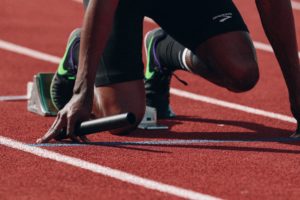Knees
Cartilage Regeneration and Repair
Cartilage acts as natural cushioning and its health is vital to the proper function of the knees and shoulders. Pain and swelling increase as cartilage wears down and, because cartilage does not have a blood supply, defects do not heal and cartilage regeneration cannot occur on its own. Untreated cartilage damage can result in degenerative joint diseases, like osteoarthritis.

Is cartilage regeneration possible?
Yes! At the Emory Sports Medicine Complex, Dr. Karas can harvest cartilage cells from the knee or stimulate the knee to regenerate its own cartilage and prevent further degenerative joint disease. With 25+ years of specialized expertise in orthopedic sports medicine, Dr. Karas has had his research on the subject published and offers multiple cartilage regeneration solutions to allow patients to continue moving and playing sports with ease and comfort.
Microfracture
- Minimally invasive (as opposed to open surgery, in which the surgeon must split the muscle to make an incision)
- An arthroscopic camera (about the size of a pencil) is inserted through an incision which allows Dr. Karas to view the lesion and perform the surgery with small tools
- During surgery, the lesion in the knee is stabilized and three small holes are placed at its base
- In recovery, these holes clot with growth factors (stimulates growth in living cells)
- Results in a maturation of relatively durable fibrocartilage
- Results in less tissue trauma, less post-op pain, and faster, more dependable rehabilitation than traditional surgery
Osteoarticular transplants (OATs) technique
- Minimally invasive (as opposed to open surgery, in which the surgeon must split the muscle to make an incision)
- An arthroscopic camera (about the size of a pencil) is inserted through an incision which allows Dr. Karas to view the lesion and perform the surgery with small tools
- Can be performed as an open surgery for larger lesions
- During surgery, a graft (living tissue from the patient’s own body or from a donor) is transplanted into the defective area
- After three to six months, the treated area is usually well healed with new reparative tissue
- Results in less tissue trauma, less post-op pain, and a faster rehabilitation time than traditional surgery